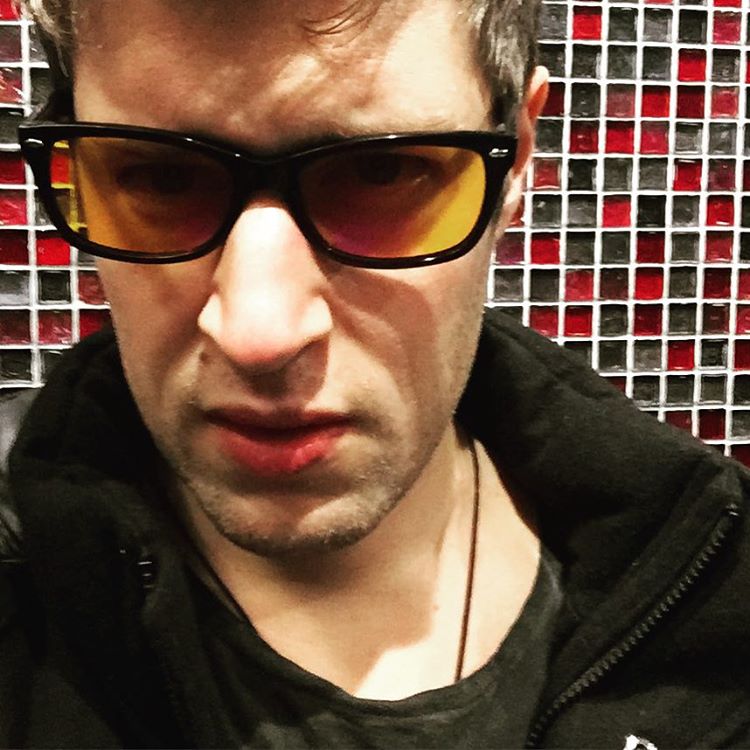Do you check your Instagram at night? Have you ever binge-watched a Netflix or HBO series into the wee hours? How about those late night work sessions with your face glued to your computer monitor?
An overwhelming body of research is finding that the harsh blue light emitted by digital devices such as smartphones, tablets, laptops and TVs wreaks havoc on our sleep, cognitive function, and overall health. (R, R) This is because short wavelength blue light is a color temperature that historically was only emitted by the sun. Today, it's everywhere, putting our brains in a perpetual state of arousal and thwarting many important processes meant to occur as our bodies wind down at night.
Suppressing the release of melatonin from our pineal gland is among these damaging effects. Melatonin is most famously known for making us feel sleepy, but is also involved in these key aspects of health:
Defense against oxidative stress (R)
Blood pressure regulation (R)
Protection against cancer (R)
Bone production (R)
Eye health (R)
Reproductive health (R)
Weight loss (R)
While avoiding blue light exposure past sundown may be the best strategy, it might also be wishful thinking in the modern world with our modern responsibilities (and let's be real, there are still 2 more seasons of Game of Thrones to come!). So here are 5 ways to safeguard yourself against blue light while still getting to do (and watch) what you need to.
1. Wear blue light blocking glasses at night.
Blue light blocking glasses don't just make a statement—research has validated that amber-colored glasses worn before bed can improve sleep and even enhance mood. (R) They do this by preventing blue light-induced melatonin suppression—by up to 50%, according to one study published in the Journal of Pineal Research. (R)
My recommendation: Grab a pair (I love Swannies), wear them for 3 hours (1 hour minimum) prior to sleep when exposing yourself to blue light.
2. Get more sunlight exposure during the day.
In one small study from Japan, exposure to morning blue light actually prevented light-induced melatonin suppression at night. (R) This suggests by going outside and actually seeing daylight, you can more safely make use of your devices at night. Who knew?
3. Install the Flux app on your desktop computer.
Flux makes the color of your computer's display adapt to the time of day—like sunlight during the day, and warm and amber-like at night. It's available for Mac and PC and acts fully autonomously. Just download it, install, and sit back and watch as your screen turn the color of a warm campfire at night. (Thankfully, this effect can always be "paused" in case you need to view something and want full the full color experience.)
4. Turn on "Night Shift" on your iPhone (or download an app for Android).
Up until recently, the only ways to shield blue light from your iPhone screens would be to "jailbreak" the phone and install an app (like Flux, above) or use a physical screen filter. The former would expose your phone to security risks, and the latter would be irksome during the daytime hours when we actually want our eyes to perceive blue light.
Thankfully iPhones now come with an option called Night Shift which removes blue hues from the screen on demand or after a certain hour. You can access your Night Shift settings by going to:
Settings > Display & Brightness > Night Shift
I recommend scheduling Night Shift from 7pm to 7am, and sliding the "color temperature" setting all the way to the right, for "more warm."
For Android users, there are two apps that achieve similar goals. The first is "Night Shift: Blue Light Filter" and the second is "Twilight"—both are available in Android Apps on Google Play.
Image source: energyearth.com
5. Install warmer bulbs in your house.
Look on light bulb packaging and find bulbs that emit warmer hues—usually between 2700 and 3000 K. This light feels inviting and cozy—the exact opposite of artificial "hospital" white. There's typically no need to ever have "cooler" hues in your home—all of the bulbs I buy for mine are at the warmest end of the spectrum.
6. Install black-out curtains in your bedroom (or wear an eye mask while you sleep).
Urban environments are flooded with light, a growing problem with consequences that researchers are just started to comprehend. Ambient "light pollution" can still be perceived by our retinas even when our eyes are closed. If this occurs during sleep, which is meant to occur in darkness, it may have repercussions on our cognitive function. One small study found that small amounts of light while sleeping led to reduced brain activation the following day. (R)
My recommendation particularly for those in heavily light-polluted areas (urban environments for example), install black-out curtains or wear a light-blocking sleep mask to sleep. Here are a few of the top rated masks on Amazon (I've never personally used any of these):
Alaska Bear Sleep Mask (4.5/5 stars)
Sleep Master Sleep Mask (4/5 stars)
Dream Essentials Contoured Sleep Mask (4/5 stars)
Try one out and let me know how it feels—or share one that you're already using—in the comments below!









